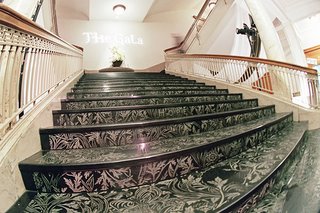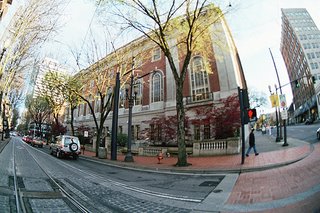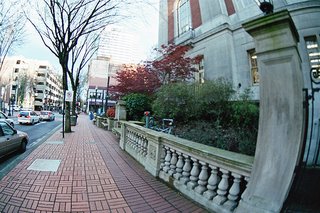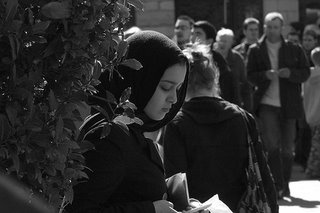Jacobs suggests specific elements to notice while wandering around a city, from architectural style to local residents; from sidewalks to scale and size of city blocks. His piece, although a bit lengthy for my taste, illustrated his skill at using clues during long walks around Testaccio, Rome and Bologna, Italy to determine key characteristics of each place. In
Observing the Unknown, he reminds us to keep the context of a place in mind- for example, clues in India are different from clues in America.
Working directly with residents in low-income housing for almost ten years, many of the concepts were familiar, especially the discussion of substandard housing conditions. In Portland, there are many downtown SRO (single room occupancy) buildings that are falling apart, and especially unsafe for vulnerable populations. Many buildings are going through condo conversions this spring, so the character of the neighborhoods will change along with the residents who live there. One example of gentrification in Portland is the
North Mississippi Avenue area in
North Portland- once a predominately poor African American community, in the past five to ten years it has gradually transformed into a hip, artsy, "up and coming" place. I didn't live in PDX until four years ago, but it would have been interesting to witness the change. Apparently, my neighborhood, the
Hawthorne District, had previously gone through the same process years before I came here.
After reading the Jacobs text, I find myself looking at my surroundings differently, and paying attention to details I may have overlooked pre-Jacobs. I see that the building across from my bus stop downtown looks like the whole top half reaching into the sky was an addition; the pale pink and grey (they might call in
salmon) City Hall I pass every day on my route to work is dwarfed by much taller, flashy, modern looking buildings in the heart of downtown. Some of the older fountains, which were probably pretty snazzy and sophisticated when built, look a bit sad and worn as traffic swirls around them each rush hour.
Will I be able to notice these same issues in Amsterdam, a city I am unfamiliar with? Are Dutch people going to be willing to discuss the transformations that have taken place around them? Will the low income housing units be substandard on a similar level as the ones here in America?
What historic clues are waiting for my eyes? Will I get more of a sense of history there while walking around than I do in my own country, or is it just different?





